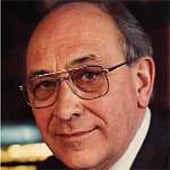OPERA SEARCH

Bernhard Krol
Some artists seem to be approaching composition through a particular instrument. After all, many of Krol's works, of which there are more than 150, were composed for horn, such as his Concerto barocco for horn and orchestra, or made into horn compositions afterwards. Between 1945 and 1967, he was a hornist with various leading orchestras in Berlin and Stuttgart. The horn marks Krol's link to Romanticism. Krol, who was born in Berlin in 1920 and, through his music study with Josef Rufer in Vienna, is considered an indirect pupil of Arnold Schoenberg, shows little tendency towards serial compositional techniques or free-tonality, but rather has his roots in the tonal composition of figures such as Reger or Hindemith. Some of his works are variations of classical models, such as his Figaro Metamorphoses on three motifs of a canzona from Mozart's opera, or his cheerful Fledermaus Variations in which he transforms Strauss's themes into a completely new musical structure. At the same time, Krol wrote many works in which he tried to combine worldly and religious forms, such as his Auferstehungs-Konzert (Resurrection Concerto) for organ and wind instruments. From 1973 onwards, he was a chairman of several juries at the International Music Competition in Munich, held by the German TV station, ARD.
